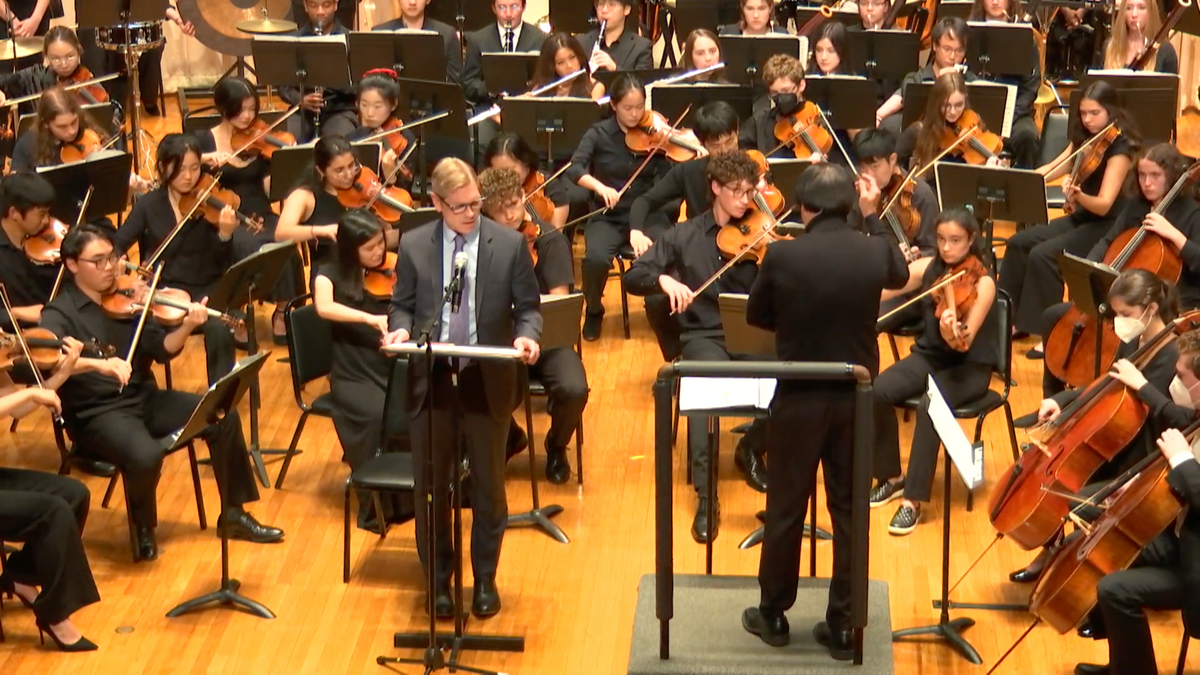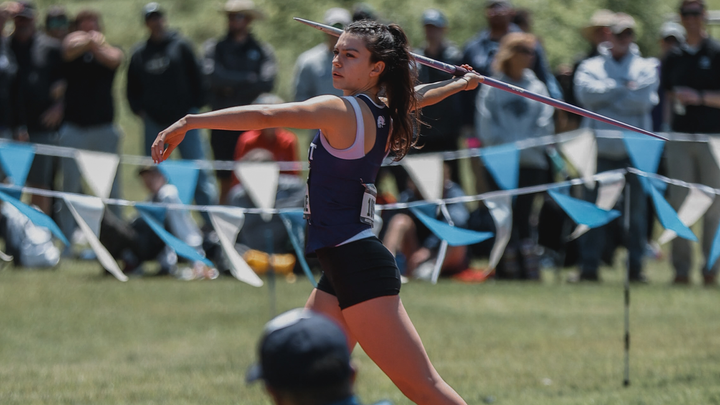American Repertory Shines in ASO Semester Debut
This past Saturday, the Amherst Symphony Orchestra made its season debut with the newest members of ASO and a piece featuring President Michael Elliott.

The Amherst Symphony Orchestra (ASO) performed its first concert of the semester on Sept. 23. During the concert’s introduction, the orchestra both welcomed the Class of 2027 and introduced the season’s themes: “Profiles in Courage,” highlighting extraordinary people in history via music, and “Second Symphonies,” playing the second compositions of various composers throughout the semester. The orchestra played a wide range of 20th-century American pieces for the concert, including one specially narrated by President Michael Elliott.
The newest members of the ASO filed in to great applause from their friends in the audience, as well as upperclassmen in the orchestra, excited to support them in their college orchestra journey. Once they settled in, the concert began.
The first song of the evening was “Overture (from Oklahoma!)” by Richard Rodgers, from his first musical with longtime writing partner Oscar Hammerstein II. The piece moved through the different tones of the entire musical, starting with loud dramatic percussion and upbeat bowing of the violins. Its tone slid between theatrical highs and slower, calmer dynamics, followed by a transition to a fun, almost comical bounce. As the piece approached a close, its notes lengthened to graceful, languid strokes of the strings.
Each piece was introduced by Mark Swanson, senior lecturer in music and director of instrumental music. He explained that the first piece centered on white settlers arguing over land use, while the second piece instead centered on the displaced Indigenous people of Oklahoma whom those white settlers drove out.
“Talowa’ Hiloha (Thunder Song)” by Jerod Impichchaachaaha’ Tate, a Chickasaw composer, drew attention to the theme of forced displacement using just the timpani drums. The beats alternated, disappearing into the distance and rolling back to the forefront and engulfing the concert hall. The piece ended with a timpani conversation between soloists Kai Glashausser ’23 and Clara Hoey ’24 that provided a meditative moment between sprawling, majestic pieces.
The next piece was the final two movements of Charles Ives’s “Symphony #2.” Ives drew inspiration from American folk music and intended the piece to sound like a town square, complete with a cacophony of dancers’ footsteps and musicians’ rhythms. The piece lived up to its promise — it was truly a mosaic of different styles, light and jaunty with a strong melody. The long, lush French horn notes, held with delicacy and control, served as a balance to the intricacy of the rest of the piece. The texture was layered and defined, and the piece ended on a discordant, zany final note.
Next came “Lyric for String,” by George Walker, a composer and the first African American person to win the Pulitzer Prize for Music. It was an understated piece at first: It began low and gentle, the strings building suspense when they joined the melody. The piece evoked the taste of tiramisu, rich and soft with deep, complex tones. It ended in a swell, gently closing out.
The final piece was the showstopper: “Lincoln Portrait,” by Aaron Copland, known as the “Dean of American Composers,” featuring none other than Elliott’s oration. “Lincoln Portrait” was written in the middle of World War II, with the intent to remind American soldiers of their purpose: to fight for and dedicate themselves to their country. The sound was cinematic, majestically crescendoing into brass solos and bright chimes following violin features. It featured light, bouncy rhythms contrasted with triumphant cymbal crashes.
All throughout, the orchestra left dips for Elliott to speak about the music. He read quotes from Lincoln, declaring that “we cannot escape history” and that we must “rise to the occasion” whenever necessary. This overlay, contrasted with the swell of orchestral music behind him, prompted curiosity: How is it different to have the music explicitly explained in real-time, rather than allowing the audience to form their own interpretations? What effect does music have when directly explained, rather than the audience having their own interpretation?
Elliott consistently came in on time and spoke synchronously with the music — an impressive feat, especially for one not accustomed to working with live accompaniment. Elliott and the entire orchestra received a standing ovation, and the newest members of the ASO flourished in their first-ever performance.
Wu attended the concert and performed the initial reporting, while Lawson contributed additional reporting and writing.





Comments ()